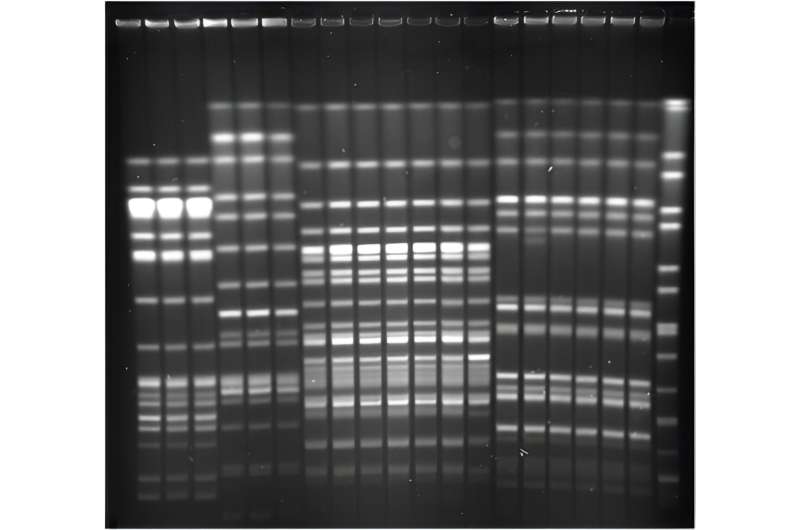This article has been reviewed according to Science X's editorial process and policies. Editors have highlighted the following attributes while ensuring the content's credibility:
fact-checked
peer-reviewed publication
trusted source
proofread
Researchers develop tool for detecting foodborne pathogen that causes severe symptoms in children

The prevalence of pathogenic E. coli has meant the frequent misidentification of a similar bacterium of the Escherichia genus. E. albertii is an emerging zoonotic foodborne pathogen, first isolated in Bangladesh in 1991. Large-scale outbreaks of food poisoning caused by E. albertii have since been reported especially in Japan, causing severe symptoms in both children and adults.
In the hopes of establishing a diagnostic method, a joint research group led by Professor Shinji Yamasaki and Dr. Sharda Prasad Awasthi, a specially appointed associate professor, from the Graduate School of Veterinary Science at Osaka Metropolitan University, has developed a way to detect E. albertii more accurately using a quantitative real-time PCR method.
The findings were published in Heliyon.
Specimen examination using this technique showed that E. albertii survived in the human intestinal tract for approximately four weeks and continued to be found in feces. The identical genotype of the bacterial DNA of E. albertii that infected siblings also suggested that intrafamilial transmission may have occurred.
"These results and a novel real-time PCR developed in this study are expected to contribute not only to the selection of appropriate treatment for E. albertii gastroenteritis, but also to the elucidation of the source and route of infection," Professor Yamasaki said.
More information: Sharda Prasad Awasthi et al, Detection of prolong excretion of Escherichia albertii in stool specimens of a 7-year-old child by a newly developed Eacdt gene-based quantitative real-time PCR method and molecular characterization of the isolates, Heliyon (2024). DOI: 10.1016/j.heliyon.2024.e30042
Journal information: Heliyon
Provided by Osaka Metropolitan University



















